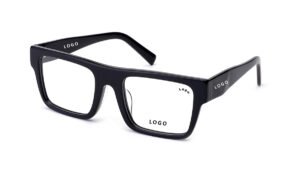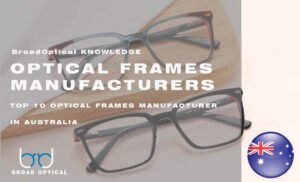Table des matières
4 Matériaux courants utilisés pour produire des lunettes écologiques
Alors que la conscience de l'environnement continue de croître, Les consommateurs recherchent de plus en plus des produits qui s'alignent sur leurs valeurs de durabilité et de consommation responsable. Ce changement de comportement des consommateurs a provoqué de nombreuses industries, y compris les lunettes, pour explorer des alternatives écologiques. Les lunettes écologiques sont conçues avec des matériaux et des processus qui minimisent l'impact environnemental, Promouvoir la durabilité de la production à l'élimination. Dans ce guide, Nous allons explorer ce que sont les lunettes écologiques, Pourquoi ils sont importants, Comment ils sont faits, et les quatre matériaux communs utilisés dans leur production.
Que sont les verres écologiques?
Les lunettes respectueuses de l'environnement sont des produits de lunettes conçus et fabriqués avec de la durabilité à l'esprit. Ils sont fabriqués à l'aide de matériaux qui sont renouvelables, biodégradable, recyclé, ou ont un impact environnemental inférieur par rapport aux matériaux conventionnels. Les processus de production de ces verres visent également à réduire les déchets, consommation d'énergie, et l'empreinte carbone globale.
Pourquoi choisir des lunettes respectueuses de l'environnement?
L'industrie des lunettes, comme beaucoup d'autres, s'est historiquement appuyé sur des matériaux et des processus qui contribuent à la dégradation de l'environnement, y compris l'utilisation de ressources non renouvelables, produits chimiques nocifs, et des déchets excessifs. En choisissant des lunettes écologiques, Les consommateurs peuvent:
Réduire l'impact environnemental: Opter pour des lunettes à base de matériaux durables aide à réduire l'épuisement des ressources naturelles et réduit la quantité de déchets qui se retrouvent dans les décharges et les océans.
Soutenir la production éthique: De nombreuses marques de lunettes respectueuses de l'environnement hiérarchisent les pratiques de fabrication éthique, assurer des conditions de travail équitables et minimiser les dommages environnementaux.
Promouvoir la durabilité: En investissant dans des produits écologiques, Les consommateurs contribuent à la demande de pratiques durables, Encourager davantage d'entreprises à adopter des méthodes respectueuses de l'environnement.
Comment les lunettes écologiques sont-elles fabriquées?
Les verres écologiques sont fabriqués à l'aide de matériaux qui sont soit recyclés, d'origine durable, ou biodégradable. Le processus de fabrication implique souvent:
Réduire les déchets: Utilisation de décharges, Matériaux recyclés, ou optimiser la production pour minimiser les déchets.
Abaisser la consommation d'énergie: Mettre en œuvre des pratiques éconergétiques et utiliser des sources d'énergie renouvelables.
Éviter les produits chimiques nocifs: Élimination ou réduction de l'utilisation de produits chimiques toxiques dans le processus de production.
Maintenant, Explorons les quatre matériaux communs utilisés pour produire des lunettes écologiques:
4 Matériaux courants utilisés pour produire des lunettes écologiques
Plastique recyclé
Le plastique recyclé est un matériau clé dans les lunettes écologiques, dérivé de plastiques post-consommation tels que des bouteilles de pipi. L'utilisation de plastique recyclé aide à réduire la demande de plastique vierge, qui est dérivé de ressources pétrolières non renouvelables. Les cadres en plastique recyclé sont durables, léger, et disponible dans une variété de styles et de couleurs. En réutilisant les déchets en plastique, Les fabricants peuvent créer des lunettes élégantes tout en contribuant à la réduction de la pollution plastique et en soutenant une économie circulaire.

Bambou
Le bambou est un matériau très durable en raison de son taux de croissance rapide et de sa capacité à prospérer sans avoir besoin de pesticides ou d'engrais. Le bambou est également naturellement résistant aux ravageurs et aux maladies, Réduire le besoin de traitements chimiques. Les cadres en bambou sont légers, fort, et avoir une apparence naturelle distinctive qui fait appel à des consommateurs écologiques. En plus, Le bambou est biodégradable, ce qui signifie qu'il peut se décomposer naturellement à la fin de son cycle de vie, laisser une empreinte environnementale minimale.

Acétate biodégradable
L'acétate biodégradable offre une alternative écologique à l'acétate traditionnel, qui est généralement fabriqué à partir de plastiques à base de pétrole. Ce matériau est dérivé de sources naturelles comme la pulpe de bois et les fibres de coton, le rendre à la fois renouvelable et biodégradable. Les cadres d'acétate biodégradables maintiennent la même durabilité, flexibilité, et des couleurs vibrantes comme acétate conventionnel, Mais avec l'avantage supplémentaire de pouvoir se décomposer naturellement au fil du temps. Cela réduit l'impact environnemental à long terme et s'aligne sur les pratiques durables dans la production de lunettes.

Bois
Les cadres en bois sont fabriqués à partir de bois d'origine durable, comme Maple, noyer, ou bambou, En faire un choix naturel et renouvelable pour les lunettes écologiques. Ces cadres mettent souvent en évidence le grain naturel du bois, Donner à chaque paire de lunettes une apparence unique. Le bois est biodégradable et peut être produit avec une entrée d'énergie relativement faible, Réduire encore son impact environnemental. Certains fabricants utilisent également du bois récupéré ou de décolleté d'autres industries, minimiser les déchets et tirer le meilleur parti des ressources disponibles.

En conclusion, verres écologiques à base de plastique recyclé, bambou, acétate biodégradable, et le bois ouvre la voie dans les lunettes durables. Ces matériaux réduisent non seulement l'impact environnemental de la production de lunettes, mais offrent également aux consommateurs des options élégantes et durables qui s'alignent avec leurs valeurs. Alors que la demande de produits durables continue d'augmenter, L'adoption de ces matériaux écologiques est une étape cruciale vers un avenir plus vert dans l'industrie des lunettes.
Chez Broad Optical, Nous nous engageons à fournir un large éventail de verres écologiques fabriqués à partir de ces matériaux durables. Notre collection est conçue non seulement pour offrir des lunettes élégantes et durables, mais aussi pour soutenir un avenir plus durable. Que vous recherchiez des cadres en plastique recyclés, bambou, acétate biodégradable, ou bois, Notre sélection de lunettes écologiques garantit que vous pouvez faire un choix respectueux de l'environnement sans compromettre la qualité ou le style. Pour explorer notre gamme complète de lunettes écologiques, visiter notre Lunettes respectueuses de l'environnement page.
Partager:
Plus de messages

2024 Guide du visiteur de l'exposition internationale d'optique de Taizhou
Table des matières 2024 Guide du visiteur de l'exposition internationale d'optique de Taizhou Aperçu de l'exposition Les trois jours 2024 Le Salon international d'optique de Taizhou sera inauguré en Chine

La Chine 7 Principales régions de fabrication de lunettes
Table des matières de la Chine 7 Principales régions de fabrication de lunettes Introduction La Chine est un leader mondial dans la fabrication de lunettes. 7 des régions clés sont apparues comme

Méthodes de personnalisation du logo sur les montures optiques et les lunettes de soleil
Lorsqu'il s'agit de branding de montures optiques et de lunettes de soleil, la méthode que vous choisissez pour personnaliser votre logo peut avoir un impact significatif sur l'esthétique globale, durabilité, et la rentabilité du produit final.

10 fabricant de montures optiques en Australie
Cet article couvre 10 fabricant de montures optiques en Australie. Ces fabricants représentent l'industrie de la lunetterie diversifiée et dynamique en Australie., proposer des produits adaptés à différents styles, besoins, et fourchettes de prix.

Spécialiste des lunettes
Bonjour, Je suis Ella. Je suis l'auteur de ce post. Je travaille dans l'industrie de la lunette depuis plus de 10+ années. Pour les années passées, nous avons travaillé avec de nombreux clients et les avons aidés à trouver les solutions de lunettes parfaites pour répondre à leurs besoins. Que vous recherchiez des services OEM ou ODM pour les montures optiques et les lunettes de soleil, ou vous souhaitez en savoir plus sur les dernières tendances et technologies en matière de lunettes, Je suis là pour aider.
